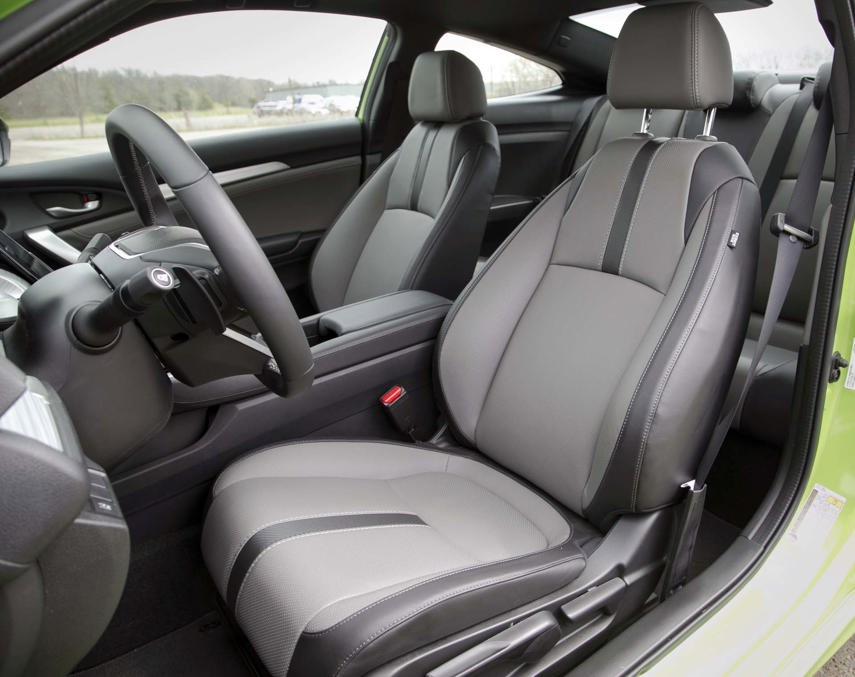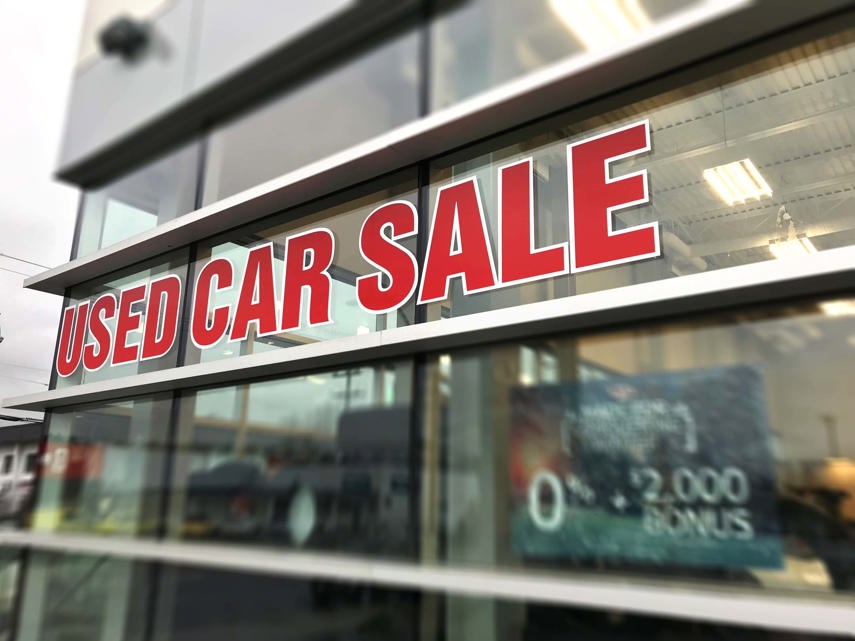Many of us like owning a new car, but it’s rare to find a person who enjoys buying a new car. The process can trigger a lot of anxieties, and we’ve rounded up the Top 10 along with ways to help you deal with them.
1. I Don’t Know What Vehicle to Buy
There are so many choices for new cars out there, and it’s easy to get overwhelmed by the endless options. Take it through a process to narrow down the selection. How many passengers do you usually carry, how much cargo do you haul, how much space do you have for parking? People often overestimate their needs: if you’re considering a truck because you haul a couple of loads once or twice a year, you might be better off having them delivered and buying a smaller, less expensive, and more fuel-efficient vehicle. And even though trucks and SUVs are popular, would a car meet your requirements? Be honest and realistic about what your wants are versus your needs.
As for the brand and model, ask friends and relatives about their vehicles. Ask what they like about them, and just as importantly, what they don’t like. If it’s auto show season and there’s one close to you, plan a visit. You can examine all the new models without any pressure and narrow down the ones you want to test drive.

2. I Don’t Know What to Look for on a Test Drive
Many people just drive around the block because they think that’s what they have to do. Use a test drive as an opportunity to really get to know the vehicle. Some dealerships may let you take a car for several hours or even overnight – ask if that’s the case. Drive the car at highway speeds, manoeuvre it through tight corners, and park it, nose-in and nose-out, to see if you’re comfortable with it.
Make sure you can find the right seating position and have good visibility all around. See if it’s easy to get in and out of all the seats (especially if your passengers are very young or very old), and how high you have to lift cargo in. Take your stuff with you and make sure everything fits: if you can reach your pack or purse, if your coffee cup’s in the right spot, if it’s easy to latch in a child seat, or if your dog crate fits. If you have a stroller or other large items you normally travel with like a hockey bag, bring it to the test drive to make sure it fits in the trunk. Play around with the infotainment system to see if you like it – try using climate control, changing the radio station, or using the navigation. If you plan to pair your phone, check if the system is compatible with it. You don’t want nasty surprises after you’ve bought the vehicle.
3. I'm Not Sure How to Deal with Salespeople
This is a huge one for a lot of people, and it’s understandable when you’re sitting across that desk trying to process all the numbers being thrown at you. While you’re asking friends and family about their vehicles, also ask if they have a salesperson they like and can recommend.
Consider making an appointment with the dealership to come in and talk to someone. That won’t guarantee a non-intimidating encounter, but it’ll help avoid you having to wait or be rushed if the showroom’s crowded. If you’re ever uncomfortable or feeling pressured, you are free to take your business elsewhere.

4. I’m Afraid of Overspending
Before you go near a dealership, set your budget. Along with the price of the car, account for additional costs, which can include pricier insurance (it’ll be more to insure a brand-new car than the older one you’re replacing), extra fuel costs if you’re moving from a subcompact to a larger car, new winter tires if your current ones don’t fit the new model, and the cost of borrowing. Don’t forget taxes or freight and destination fees, which could be thousands of dollars extra.
Once you figured out your budget, stick to it. Beware of vehicles advertised by weekly or bi-weekly pricing, which confusingly makes them sound much cheaper than they are. Don’t get suckered into upping your budget with options “that add just $10 more a month.” And don’t reveal how much you’ve budgeted per month, even if you’re asked. Now the salesperson can work backwards to reach that number, rather than negotiating a price that might be even better.
5. I Don’t Know How to Negotiate
This is high anxiety for most people. The person across the desk from you does this for a living – how are you supposed to compete?
The best way is to go in armed with information. Go to the manufacturer’s website and use the “Build & Price” feature to determine the MSRP (manufacturer’s suggested retail price) on the car you’re considering. Also check to see if there are any factory incentives currently being offered. The dealer paid wholesale for the vehicle and has to make some profit on it, but will have room for negotiation.
We don’t recommend using websites that offer to divulge the dealer’s cost, for a fee. It’s likely just an estimate, and the site may be selling your contact info to a dealer.
You want to pay the least while the salesperson wants to make the most, but it doesn’t have to be war. Make the dealer throw out the first number, make your offer, and then as required, raise your offer a little rather than cutting down on his until you come to what’s acceptable to you. If you don’t think you can manage that, there are a few dealers that have a no-haggle policy, where you pay the price advertised; see if there’s one in your area.

6. I Don’t Know if All the Charges Are Legitimate
Don’t sign anything until you’ve read over the final invoice and every charge has been explained to you. You don’t have to accept all of them. It’s mandatory that you pay sales tax and licensing costs – but just for the plates and registration, not for any fee the dealer tacks on for doing it.
The dealer will add a freight and PDI (pre-delivery inspection) charge. If you think it’s too high, ask if it can be lowered. Many dealers will add a “documentation fee” for writing up the paperwork, which you’re not required to pay and can negotiate. You are also not required to purchase such dealer add-ons as undercoating, fabric protector, nitrogen fill in the tires, or “VIN etching,” a generally pointless deal where the car’s identification number is etched into the windows for theft protection – even if the dealer claims they’re already on the car and so have to be included on the bill.
7. I Don’t Know if I Should Buy an Extended Warranty
An extended warranty, also known as a service contract, is basically an insurance policy for repairs. If your car needs an expensive fix, the warranty will have a lot of value, and if it doesn’t, it’s money down the drain. The decision is mainly about your level of comfort: if you’re fearful about the prospect of large repair bills, an extended warranty can give you peace of mind. That said, dealers and automakers wouldn’t offer them if they didn’t make money on them.
Don’t buy a warranty until you’ve read all the fine print and received a copy. What isn’t covered is just as important as what is. Know how much the deductible is. Know when the coverage starts (so you’re not paying to overlap the factory warranty) and if you can put off buying it until you’re closer to the vehicle’s warranty expiration. If you do buy, we recommend getting only the automaker’s extended warranty and not one from a third-party supplier. These are usually cheaper but invariably come with restrictions, which can include pre-authorization for repairs and strict maintenance requirements. Shops aren’t required to accept them, so you may have to pay up front and wait for reimbursement.

8. I Don’t Know if I Should Sell or Trade In My Current vehicle
If you plan to trade, don’t say so until you’ve negotiated the price of the new one. These are two separate transactions. If you’re asked, say it’s still up in the air. Otherwise, the salesperson can work the trade-in value into the deal, and at his advantage.
“Sell or trade” has pros and cons on both sides. If you sell privately, you’ll get more money for it. However, you have to prepare the vehicle, which could include a safety and detailing it; advertise it; take the time to show it to prospective buyers (and likely a few tire-kickers); and make sure the payment is legitimate.
If you trade you’ll get less, because the dealer has to turn a profit on it – but the convenience might be worth it. You simply drive it in, hand over the keys, and drive out in your new one. You’ll also only pay sales tax on the difference between your new vehicle and your old one. If the new one is $30,000, but you got $10,000 for your trade-in, you’re only taxed on $20,000.
9. I’m Not Sure About Financing
Arrange a preapproved loan with your bank. You’ll go into the dealership knowing that rate and can compare the plans you’re offered, and if your bank is better, you can buy your vehicle right away.
Dealers make money if they arrange your financing, but it could still work in your favour if the automaker is offering zero- or low-cost financing as an incentive.
Be very cautious with long-term loans. Some car loans are now up to 84 or 96 months – and that’s seven to eight years. The payments will be low, but you’ll pay more in interest over the term. You’ll also be “underwater” for a long time, owing more than the car is worth. That can come back to bite you if it gets written off in a collision, needs repairs out of warranty, or if it’s old enough that you want to trade for a new one.

10. I Don’t Know When I Should Walk Away
Don’t go in planning to storm out if things aren’t going your way – that just ups the anxiety. Most car deals go smoothly, without the buyer walking away while expecting to be called back, like haggling over a trinket in a tourist bazaar.
That said, there may be circumstances where it’s best to leave, or ask to see someone else. Perhaps the salesperson refuses to price out a new vehicle until he’s examined your trade-in, or even though you have your own financing, he insists on knowing your banking and employment information anyway.
If you reach a price stalemate and the difference is too much for you to accept, it’s time say, “Thank you for your time,” and go. Ask to take the paperwork with you. It might still be the best deal you’ll get anywhere, and you can always come back – and with less anxiety the second time around.

